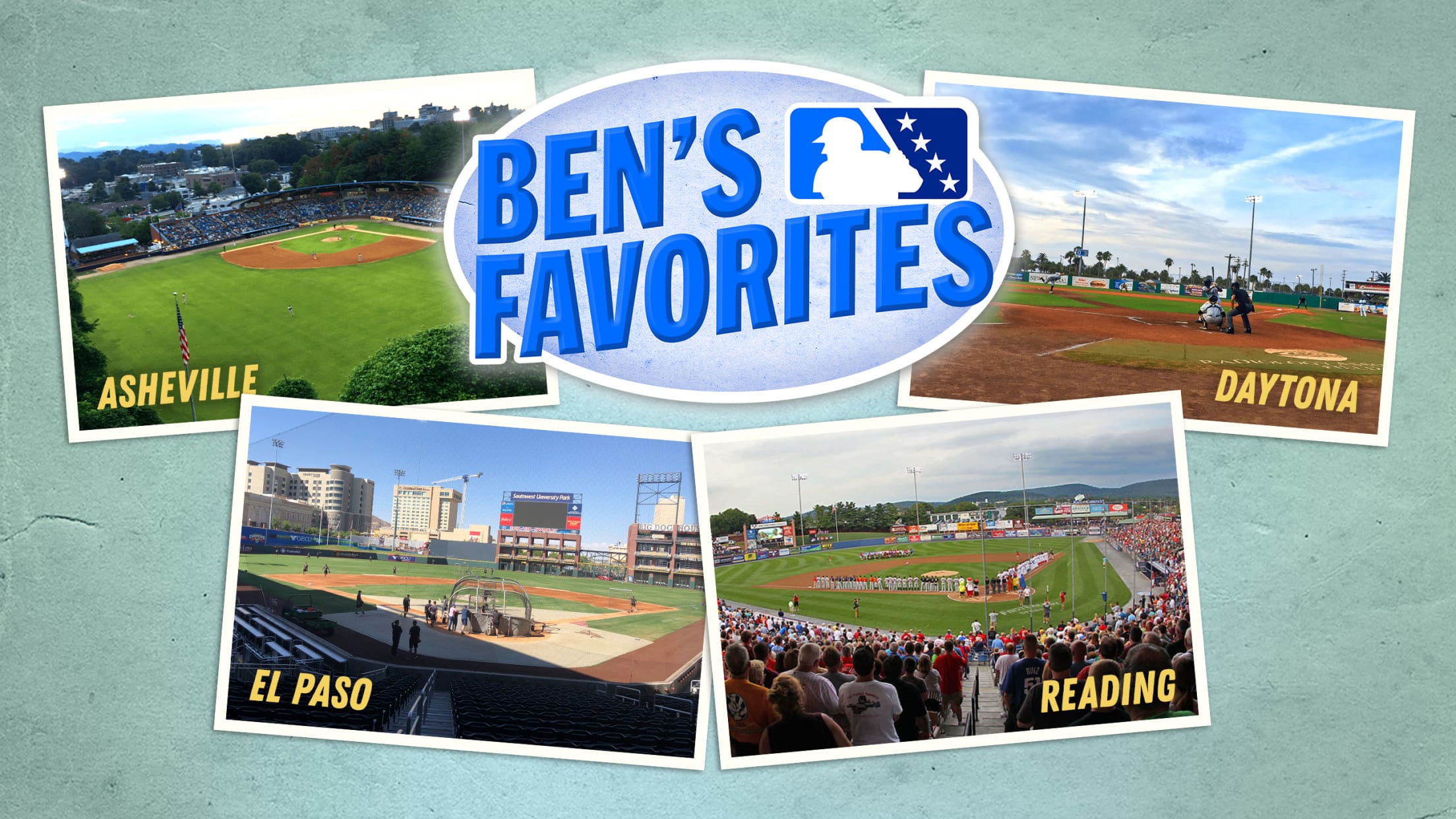
Picking favorites: The best Minor League ballparks

"What's your favorite ballpark?"
I get this question a lot. More than than any other, and for good reason. Over the course of 12 seasons, I've visited 186 Minor League ballparks in my professional career, many of them more than once. It all starts to blur together after a while, to the point where I find myself asking the same question.
"What's your favorite ballpark?"
It's a tough question to answer, because the variety of Minor League ballparks is indicative of the variety of the American landscape. Comparing a new downtown Triple-A stadium to a 90-year-old Single-A stadium is, like the cliché goes, comparing apples to oranges. Nonetheless, this -- an updated version of an article that originally ran in 2018 -- represents my best attempt at answering the question.
Ballpark Guides for EVERY Minor League team »
What follows is a level-by-level look at my favorite ballparks. Click on each ballpark's name to see its corresponding Minor League Ballpark Guide. Plan your road trip today!
Triple-A
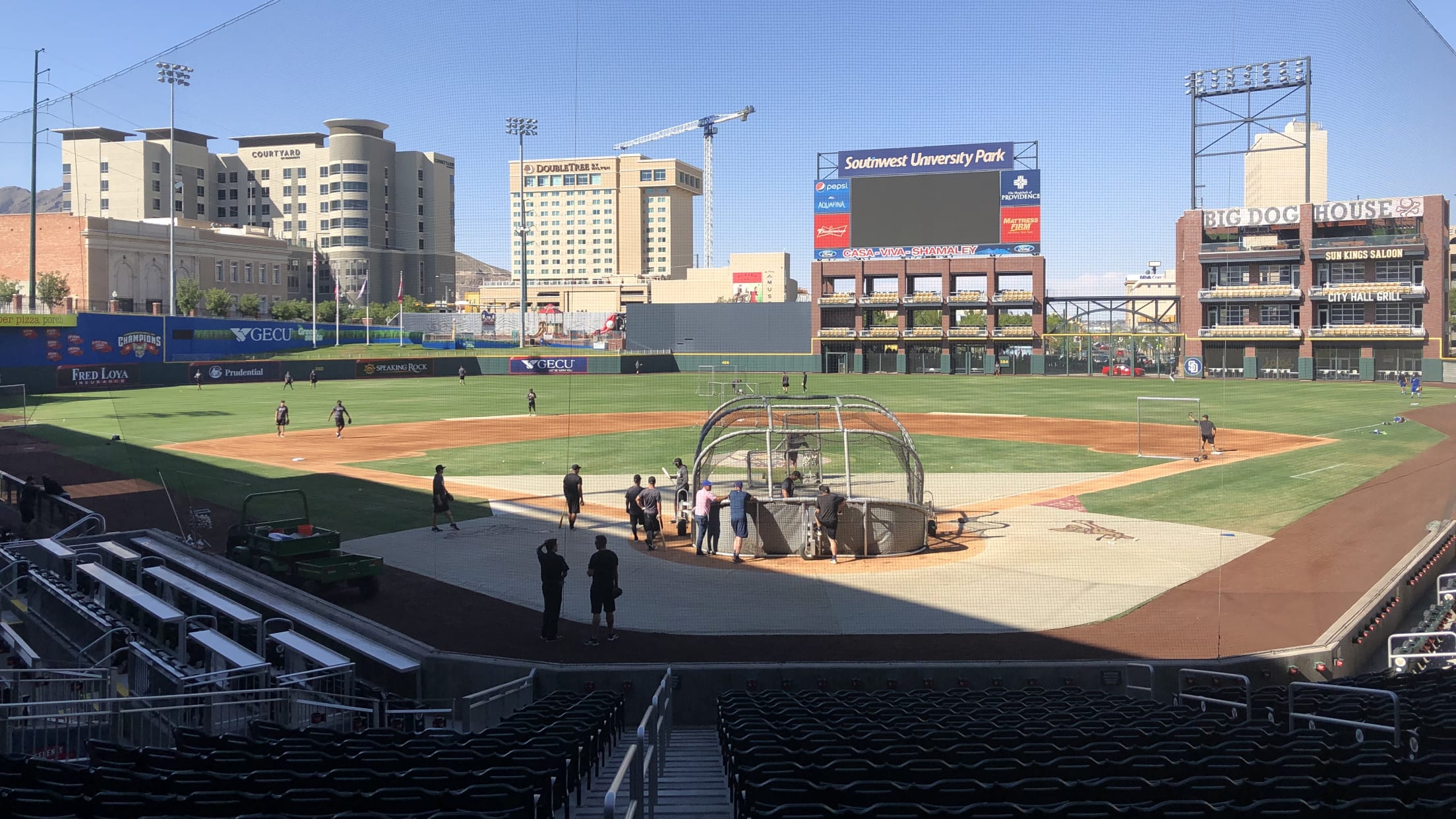
Southwest University Park (home of the El Paso Chihuahuas, San Diego Padres affiliate in the Pacific Coast League)
Opened: 2014
El Paso is a border town and Southwest University Park encapsulates the blend of Mexican and American culture that typifies life in the West Texas city. The Chihuahuas name is a reference not just to the small dog, but to the Chihuahuan Desert located in both West Texas and a substantial part of Northern Mexico. The Franklin Mountains loom beyond the park's left-field fence (less visible now due to development around the ballpark), the El Paso skyline is visible to the right and the sprawling, mountainous cityscape of Juarez, Mexico, hovers just beyond the home-plate side of the stadium. Eye-catching architectural components -- such as the three-story "Big Dog House" in right field -- make the park itself a memorable place to explore, and the multicultural fan base provides a livelier-than-usual Minor League gameday atmosphere.
Honorable Mentions: Truist Field (Charlotte Knights); Durham Bulls Athletic Park (Durham Bulls); Fifth Third Field (Toledo Mud Hens)
Double-A
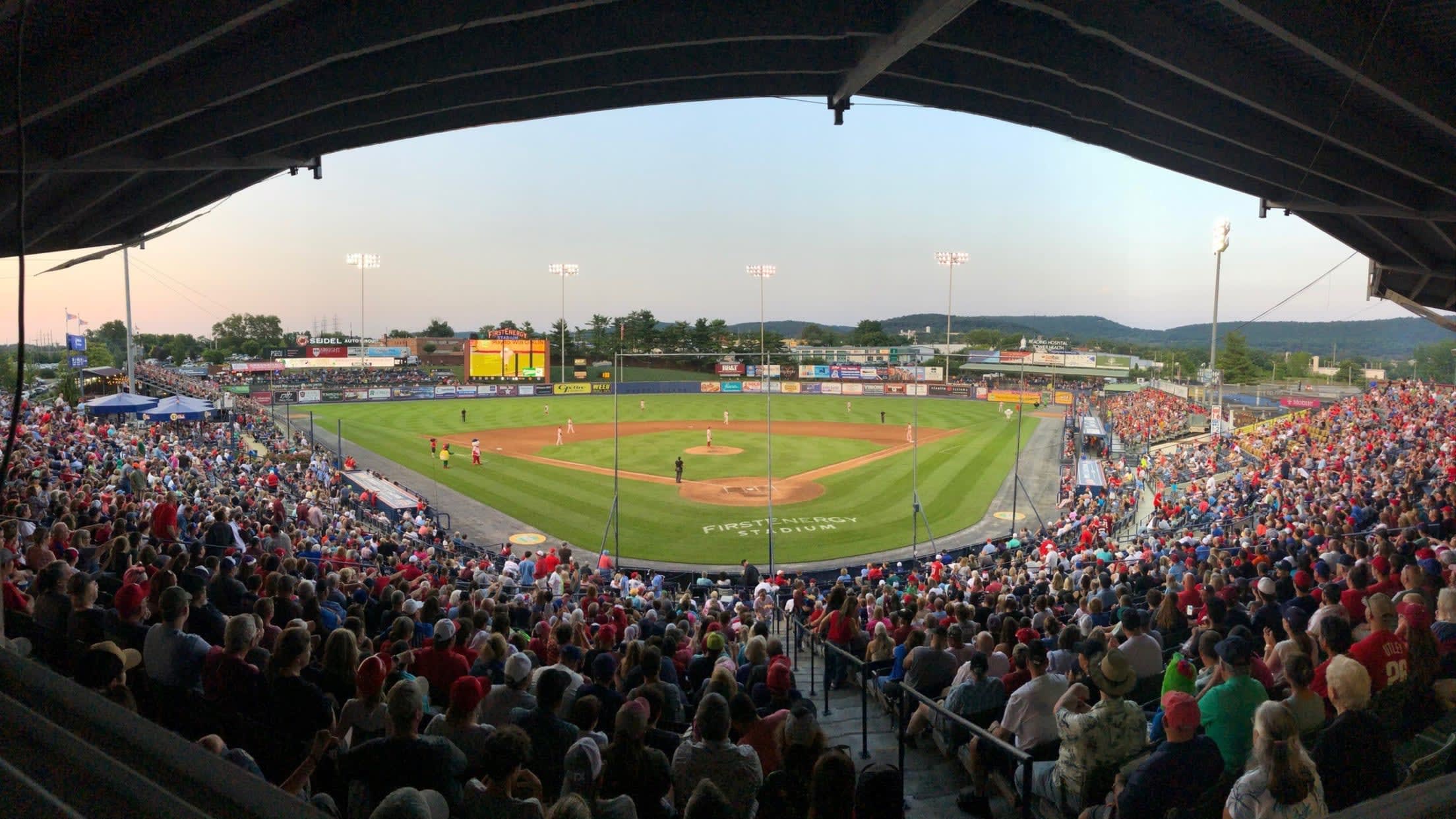
FirstEnergy Stadium (home of the Reading Fightin Phils, Philadelphia Phillies affiliate in the Eastern League)
Opened: 1951
Seventy-two-year-old FirstEnergy Stadium is perhaps the premier example of a "best of both worlds" Minor League atmosphere, in which an old ballpark retains its throwback charm while offering a modern entertainment experience. Reading has been a Philadelphia affiliate since 1967, and the long history and convenient proximity between the two organizations results in a fan base that is both passionate and knowledgeable. The same goes for the front-office staff, which has featured far less turnover than is typical in the industry. A night at First Energy Stadium is imbued with the past, but somewhat paradoxically, not weighed down by the no-distractions dogma of the baseball purist. This is a ballpark filled with color and characters, set against a bucolic Berks County backdrop, and recent renovations ensure it will remain a premier destination for decades to come.
Honorable mentions: Dunkin' Park (Hartford Yard Goats), Riders Field (Frisco RoughRiders), Blue Wahoos Stadium (Pensacola Blue Wahoos)
High-A
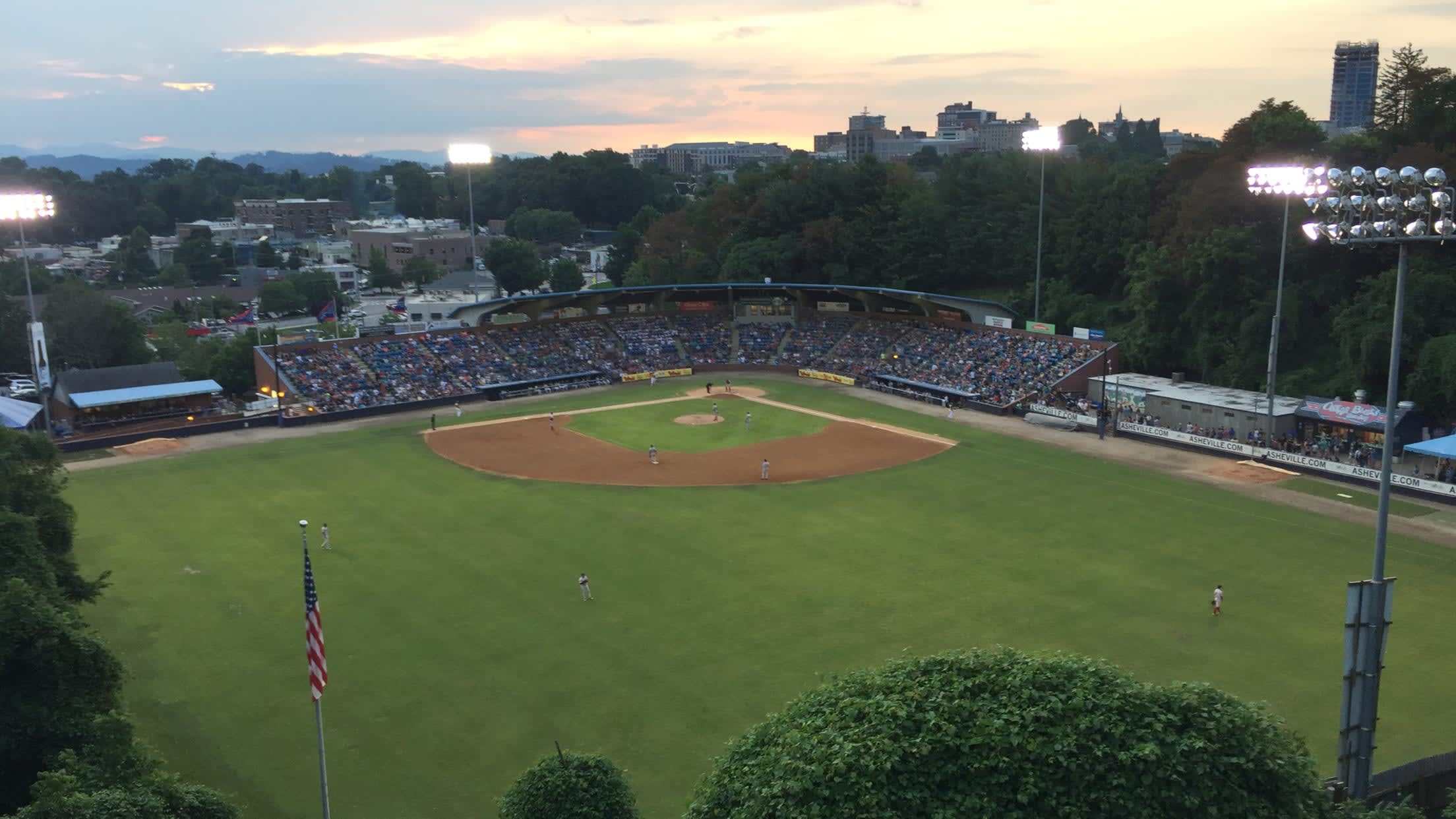
McCormick Field (home of the Asheville Tourists, Houston Astros affiliate in the South Atlantic League)
Opened: 1924
In 1926, after an exhibition game at McCormick Field, Babe Ruth had this to say: "My, my, what a beautiful place to play. Delightful. Damned delightful place." Nearly 100 years later, the Bambino's sentiment still applies. Nestled into a hilly landscape south of downtown Asheville, McCormick Field is an anachronistic charmer. Ruth is not the only legendary slugger who played there; in "Bull Durham," Crash Davis broke the Minor League home run record as a member of the Tourists and scenes from the movie were filmed at McCormick Field. The concourse, bursting with cartoonishly decorated concession stands, exudes the sort of funky charm for which Asheville has become known. Crowds are liable to be the biggest for "Thirsty Thursday," a promotional idea that was first conceived (and later copyrighted by) the Tourists. It's a fitting claim to fame for a team that plays in a region where local breweries abound to the extent that the club occasionally changes its name to the "Beer City Tourists."
Honorable mentions: Parkview Field (Fort Wayne TinCaps), Modern Woodmen Park (Quad Cities River Bandits), Jackson Field (Lansing Lugnuts)
Single-A
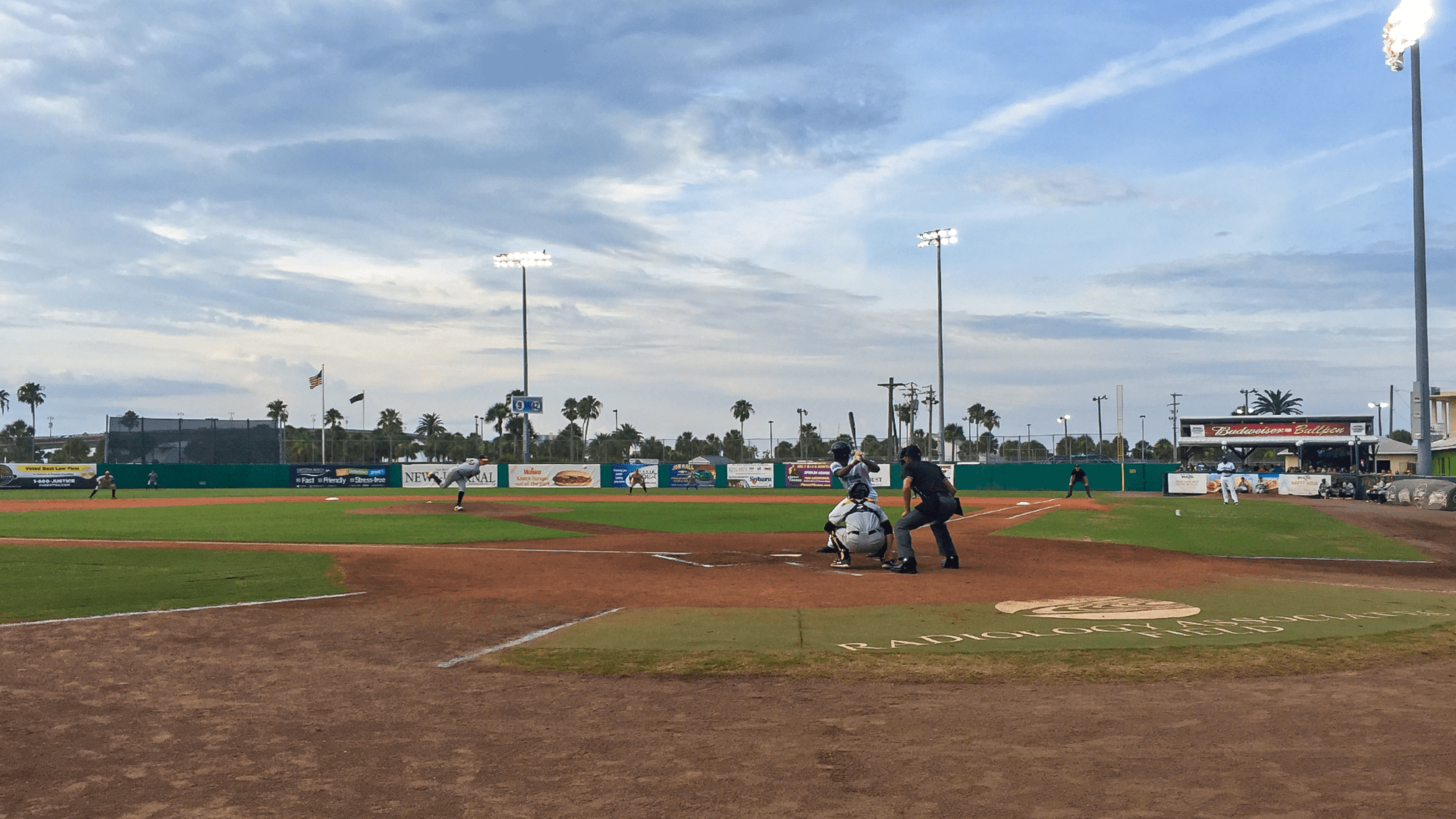
Jackie Robinson Ballpark (home of the Daytona Tortugas, Cincinnati Reds affiliate in the Florida State League)
Opened: 1914
Most Florida State League ballparks aren't exactly Minor League ballparks, per se, but Spring Training facilities occupied by Minor League teams after their parent clubs depart at the end of March. Daytona Beach's Jackie Robinson Ballpark is the circuit's notable exception, as it is a classic facility located on an actual island with charm and style to spare. The majority of fans sit in a covered grandstand under a rooftop press box, with views of the Broadway Bridge spanning the Halifax River. The lively concourse, abutted by lime green exterior walls, includes the Bob Ross "Happy Little Tree" (planted in honor of the Daytona Beach native) as well as an interactive museum devoted to the life and times of stadium namesake Jackie Robinson. The baseball trailblazer spent 1946 Spring Training in Daytona Beach, as the city ignored Jim Crow segregation laws to let him play his first games as a member of the Brooklyn Dodgers organization. The ballpark was renamed in his honor in 1990; that same year, a Jackie Robinson statue was erected outside of the ballpark.
Honorable Mentions: The Diamond (Lake Elsinore Storm), Excite Ballpark (San Jose Giants), Valley Strong Ballpark (Visalia Rawhide)